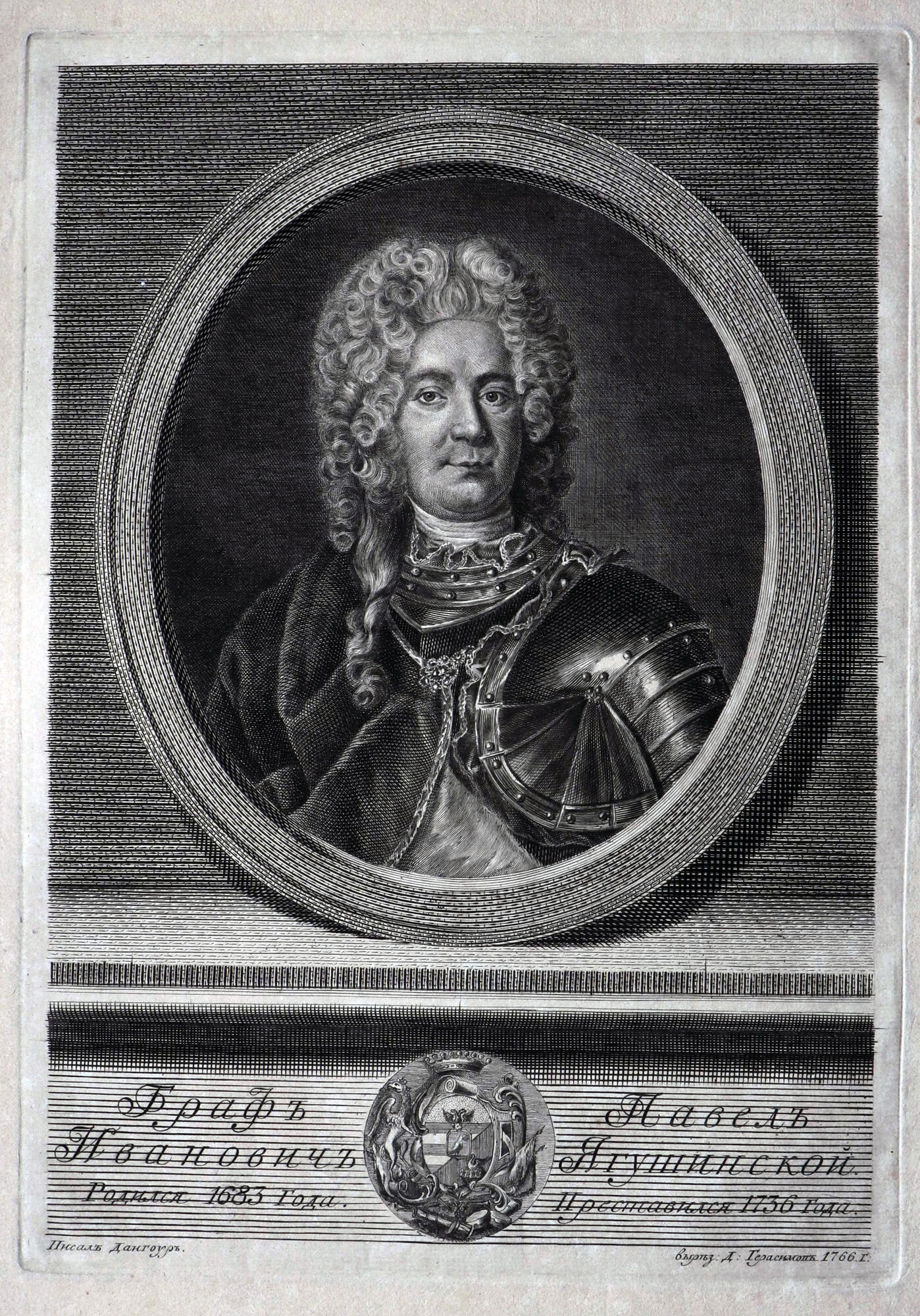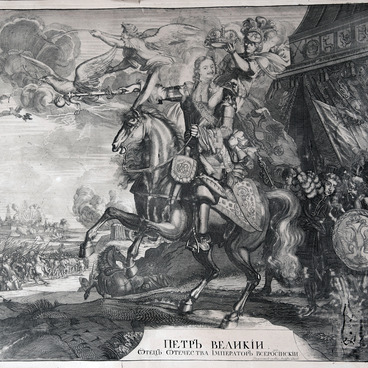Pavel Yaguzhinsky (1683–1736) was a Russian citizen of Polish descent. He served in the Preobrazhensky Regiment, accompanied Peter the Great many times in foreign travels and military campaigns as an orderly. He proved himself as a talented diplomat. Having successfully made deals with Denmark (1714) and Austria (1721), in 1722, he became the first Prosecutor General of the Governing Senate. In the 1720s and 1730s, he was ambassador to Poland and Prussia. In 1731 he was granted the title of count.
For giving away the plans of the Supreme Privy Council to Anna Ioannovna, Yaguzhinsky was arrested. He avoided execution thanks to the intervention of his father-in-law, Gavriil Ivanovich Golovkin. Once Anna Ioannovna acceded to the throne, he became a cabinet minister.
Historians have noted the personal attractiveness of Yaguzhinsky: he had an expressive noble face, a courteous demeanor, he was prudent, loyal to his word, rigorous and just. In the “Experience of Biographies of Prosecutor-Generals and Ministers of Justice”, Pyotr Ivanovich Ivanov noted that Yaguzhinsky “tried to avoid onerous ceremonies <…> and liked to dine in his family circle with some of his friends. This is when he was the most engaging conversationalist.”
Dmitry Gerasimov was born in 1739 in the family of a soldier of the Semenovsky Regiment. The grandfather of the future engraver, Grigory Musikiysky, was one of the founders of the miniature portrait in Russia, a “master of finift” (enamel). He painted portraits of Peter I, his family and his entourage more than once.
At the age of ten, Gerasimov began studying at the Drawing Chamber of the Academy of Sciences under Johann Elias Grimmel, a designer of fireworks and creator of animalistic drawings for the Peter the Great Museum of Anthropology and Ethnography or Kunstkamera. In July 1753, Gerasimov entered the engraving department, led by Ivan Alekseyevich Sokolov, where he received a salary of 15 rubles.
Six years later, Gerasimov was transferred from the Academy of Sciences to the engraving class at the Imperial Academy of Arts. There he was mentored by Georg Friedrich Schmidt, whose style the student largely adopted. Schmidt was a prominent master of the Frederician Rococo, which was softer and more picturesque than its French counterpart.
Gerasimov remained at the Academy and taught arithmetic and geometry in elementary school. In 1771 he resigned at his personal request. Gerasimov’s favorite genre was portrait.

